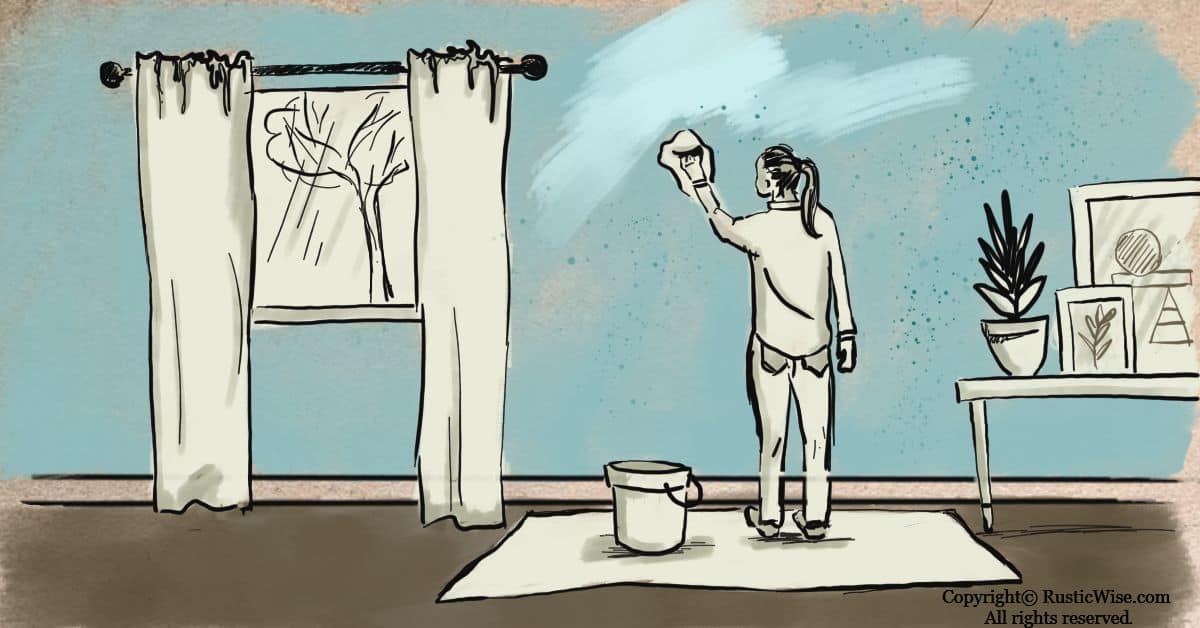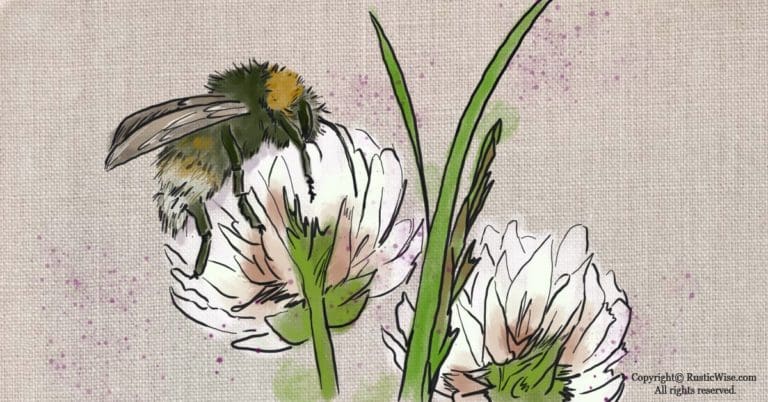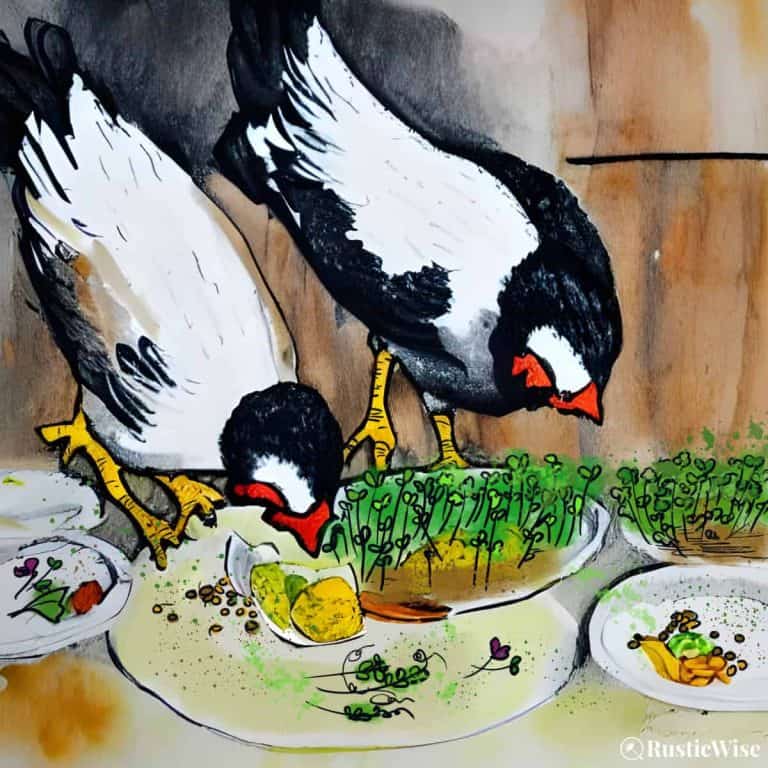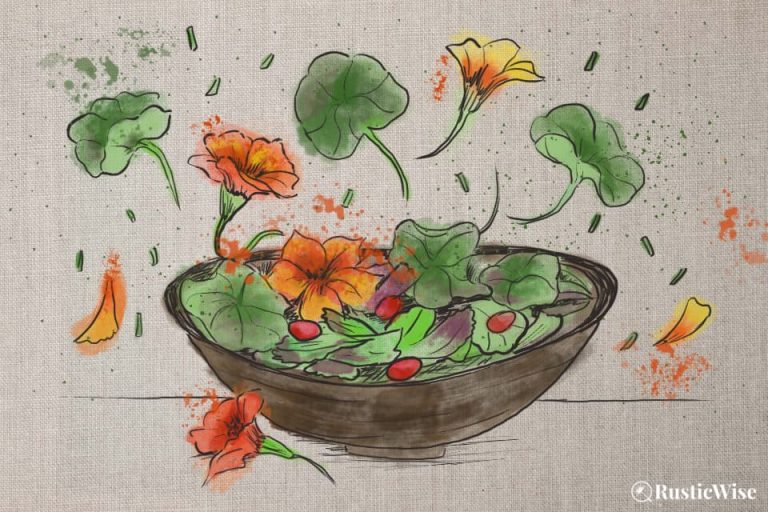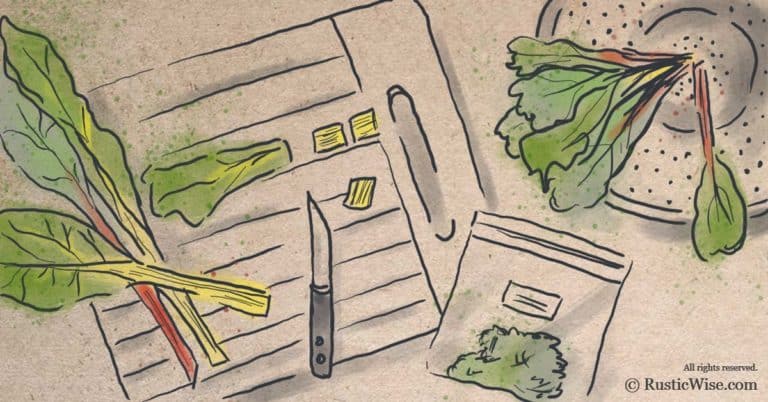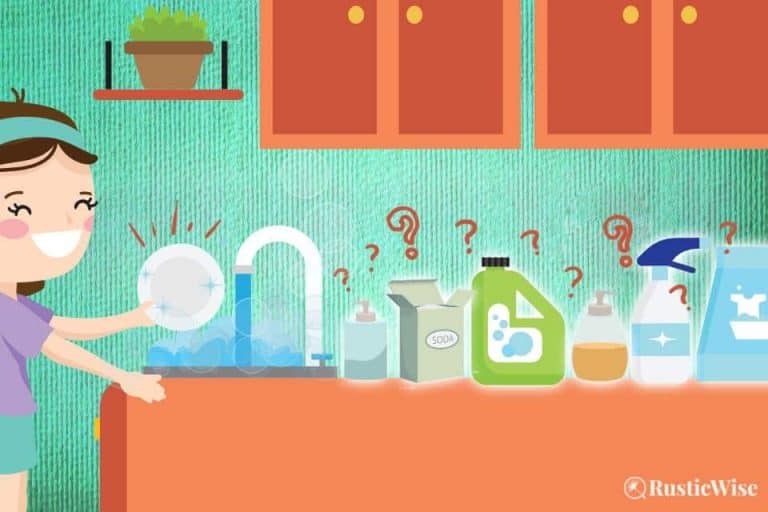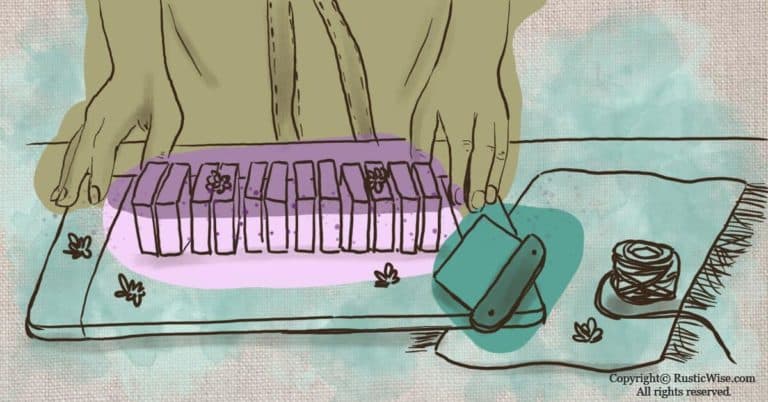DIY Homemade Sugar Soap for Walls (With Natural Ingredients)
RusticWise is supported by its readers. When you purchase through links on our site, we may earn an affiliate commission. As an Amazon Associate, we earn from qualifying purchases. Thank You!
Sugar soap is a strong cleaner used to prep walls for painting, and remove tough stains or grease. It’s called sugar soap because when it comes in powdered form, it looks like granulated sugar, although it doesn’t actually contain any sugar.
While you can buy sugar soap at hardware stores, it’s toxic and can irritate skin and eyes. We’ll show you a few ways you can make your own homemade sugar soap for walls to clean, degrease, and prep your walls before painting. You’ll need just a few simple ingredients you already have at home.
If your interior walls are starting to look a bit dingy and dirty, washing them is a great way to freshen up your home. You may find that some natural DIY solutions work great and don’t actually need any store-bought cleaners to do the job. We’ll go over a few natural and easy ways to clean your walls.
What exactly is sugar soap for walls?
Sugar soap is a powerful wall cleaning solution that helps strip surfaces of built-up dirt, grime, and grease. Despite its name, sugar scrub for walls contains no actual sugar.
While it often comes in powder form, commercial sugar soap also comes in liquid concentrate. Both powdered forms and liquid forms need to be diluted with water before using. While every manufacturer has different ingredients, most store-bought sugar soaps contain sodium hydroxide (lye) or phosphoric acid, along with other chemicals.
The term “sugar soap” is often used in Europe and Australia. But here in North America, you won’t find much sugar soap on the shelves. Instead, the most similar thing to sugar soap is TSP (trisodium phosphate).
Sugar soap uses
There are many uses for sugar soap around the home.
The main purpose of this cleaning solution is to clean and prep painted walls for a fresh coat of paint to boost paint adhesion. It’s also used to scrub off stubborn stains and greasy surfaces. Nicotine stains also come off more easily.
Some people also like to use it for doing a deep clean on a heavily soiled surface such as neglected kitchen cabinets.
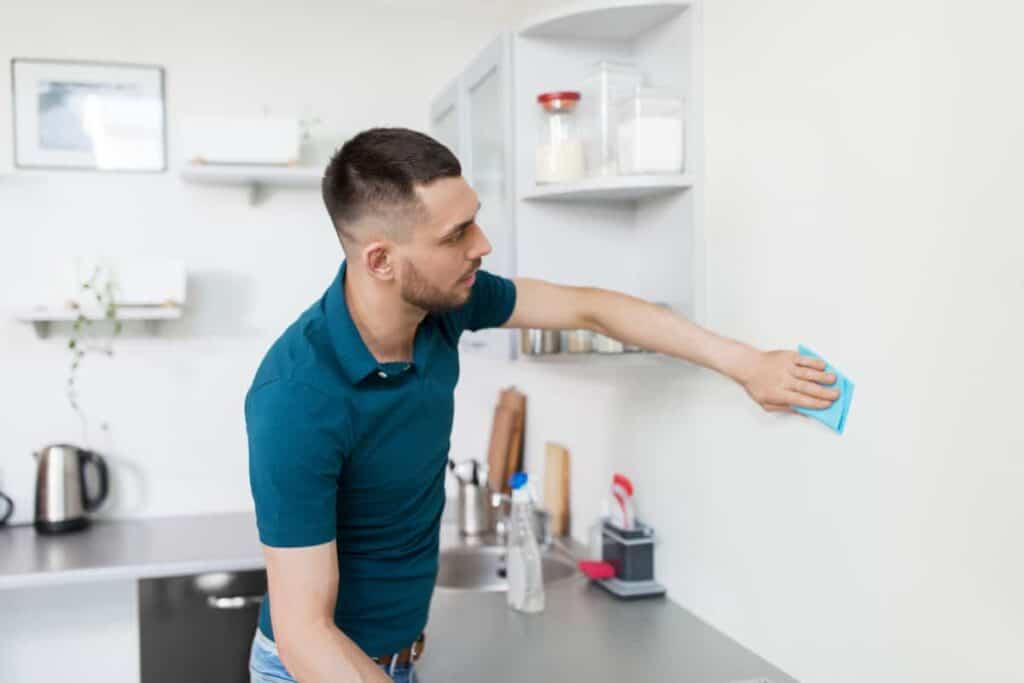
Why make your own wall cleaning solution?
If you’re on a quest to use more natural products in your life, making your own cleaners is one of the first steps. Or maybe you simply don’t feel like running to the hardware store for a wall cleaner.
Like other store-bought cleaners, sugar soap and TSP are toxic cleaners that contain harsh chemicals that are an irritant when it comes in contact with your skin or eyes.
One TSP material safety data sheet (MSDS) I found says it contains phosphoric acid, trisodium salt, and dodecahydrate. It says, “Avoid dispersal of spilled material and runoff and contact with soil, waterways, drains and sewers.”¹
I’ve used TSP before for cleaning walls and prepping them for painting. Let me tell you that this stuff works! TSP works almost too well as it sometimes strips the paint right off the wall if you’re not careful.
TSP was once the de facto cleaner of choice for painters, and other DIYers who had to clean surfaces. But over the years, people have started using more eco-friendly alternatives.
Here are a few reasons why you might want to reconsider using TSP or sugar soap:
- Toxic irritant: As we mentioned earlier, TSP is a known irritant that can damage eyes and skin. It can also irritate your respiratory system which is why it’s important you work in a well-ventilated area. Protect yourself by wearing the appropriate safety gear such as gloves and long sleeves. If you have any young children or pets, using TSP may not be the best choice.
- Harmful to the environment: When a toxic substance like TSP is disposed of, it enters our waterways where it wreaks havoc in local ecosystems such as lakes and streams. Phosphates contribute to increased algae growth. According to the U.S. Environmental Protection Agency (EPA), when this happens, eutrophication occurs which decreases oxygen levels. Algae blooms may develop as a result of water with high levels of phosphorus. This harms local fish and aquatic ecosystems. If you’re using TSP on your deck, the water runoff may harm your landscaping.²
- May damage certain surfaces: Sometimes, TSP is so effective at cleaning that it may damage certain surfaces. As I mentioned before, certain types of paint may be rubbed right off if you’re scrubbing too hard. Avoid using TSP on certain surfaces such as metal, glass, tile, or grout.
- Local restrictions: Some U.S. states have banned the use of TSP due to its harmful effects on the environment.
Note: A quick look at the ingredients in Everbuild Sugar Soap Liquid includes water, trisodium nitrilotriacetate, sodium c10-13 alkyl, benzenesulfonate, sodium hydroxide (lye), CI 45350, methylisothiazolinone, and benzisothiazolinone.³ Don’t know what most of these ingredients are? Maybe it’s time to make your own homemade sugar soap!
Wall cleaning tips
Before you start scrubbing away, let’s go over a few tips on how to get squeaky clean walls.
- Prep your walls: When it comes to washing or painting walls, you know that it’s all about the prep work. Remove anything in the way, such as picture frames. I like to take a normal broom with a stiff brush to give the entire wall a quick “sweep.” If you haven’t cleaned your walls for a while, you might find a cobweb or two! Even if your walls look clean, don’t skip this preliminary step. Even clean-looking walls may have a layer of film or dust. Don’t forget to clean around the tops of baseboards too!
- Cover your flooring: Place a painting drop cloth, or an old bedsheet along the flooring to protect it from drips.
- Top down, section by section: Start at the top of the wall and work your way down. This allows you to catch any drips along the way. Work in vertical sections to ensure you don’t miss any spots.
Supplies you’ll need:
- Something to clean with—sponge, a microfiber cloth, or a clean white rag (one that doesn’t leave lint). Or, you can also use a flat-type mop with a soft microfiber attachment.
- A few old terry cloth towels for drying the wall and/or wiping up any spills or excess water
- An old toothbrush (or similar) for scrubbing out any stubborn stains
- Large bucket
Depending on the condition of your walls, you may need some of the following ingredients:
- Washing soda (sodium carbonate)
- Liquid dish soap
- Baking soda
- White vinegar
- Essential oils (optional)
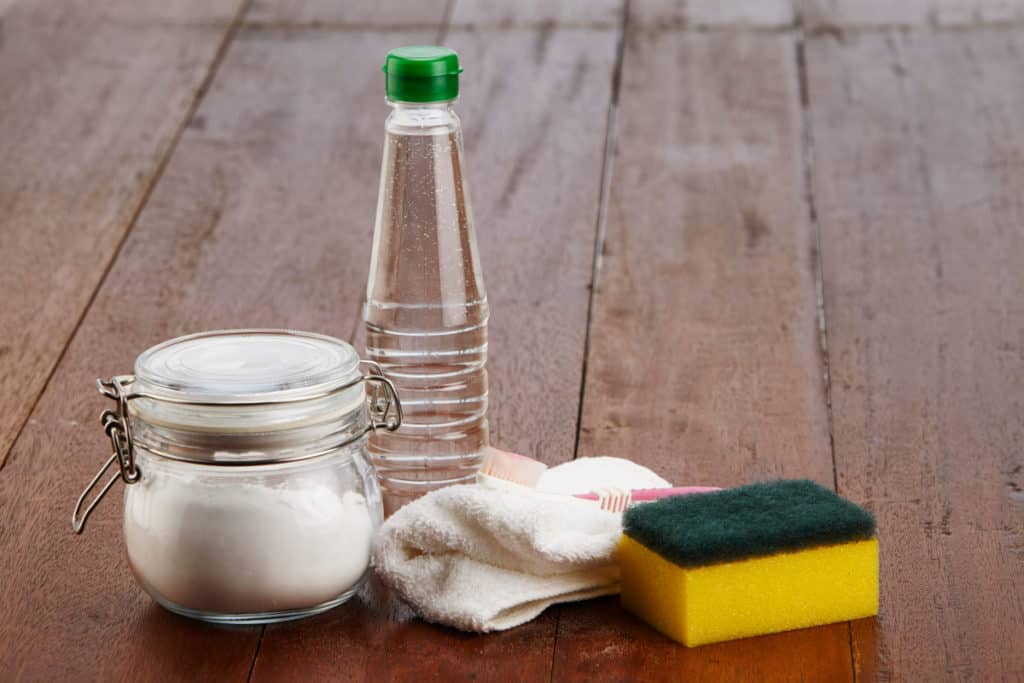
DIY homemade sugar soap for walls recipes
Okay, so are we all in agreement that there’s no point in using harmful chemicals when natural ones will do? Great!
If you’ve looked all over the internet for DIY cleaning solutions, there are some that raise eyebrows.
Solutions that call for a combination of vinegar (an acid) mixed with a base like Castile soap won’t work, according to the Queen of Clean over at the David Suzuki Foundation.⁴ While this combination isn’t harmful, you’ll just have an oily mess. This is because the acidic properties of vinegar cancel out the cleaning properties of soap. Plus, vinegar causes Castile soap to curdle!
Tip: Before going all gung-ho with your wall cleaning, make sure you test a small inconspicuous area on your wall first. All interior wall paints react differently. Use extra care if your walls have a matte finish (flat, eggshell, satin) as these are not as durable as gloss or semi-gloss paints. Also make sure that your sponge is non-abrasive to prevent damaging painted surfaces.
Depending on how dirty your walls are, we’ve rounded up a few DIY wall cleaning solutions by strength:
- Regular cleaning for mildly dirty walls
- Stronger cleaning solutions to cut through grease
- Natural ways to remove stubborn wall stains
For all-purpose mild cleaning
You really don’t need much cleaning power if your walls aren’t too dirty. For times like this all you need is a bit of warm water and liquid dish soap.
You’ll need:
- A large bucket
- Castile soap or liquid dish soap
- Warm water
- Sponge or soft rag
- Terry cloth towel for drying
- Squirt a few drops of gentle liquid dish soap into a large bucket and fill with warm water. You’ll have a bucket of nice, sudsy warm water.
- Use a rag or sponge and wring out any excess water before washing walls with the soapy solution.
- Rinse clean with plain water.
- Towel dry as needed or allow it to air dry.
For stronger cleaning solutions that cut through grease
Sometimes you need something a bit stronger to remove built-up grease. Washing soda (aka sodium carbonate, or soda crystals) is a strong alkaline powder that derives from a naturally occurring mineral from the earth. It’s a powerful degreaser and stain remover.
You can find washing soda at your local grocery store (in the laundry aisle) or hardware store.
Safety tip: While washing soda is natural, it’s still a strong alkali (much stronger than baking soda/sodium bicarbonate). That means you should take proper safety precautions such as wearing gloves and eyewear, and avoid breathing in the dust. Keep small children and pets away. Don’t use on aluminum surfaces!
Dilution ratio: For a strong solution, use 1 cup of washing soda crystals to 2 cups (500 milliliters) of water. For a moderate solution, use ½ cup of washing soda crystals to 2 cups of water.
You’ll need:
- 1 cup of washing soda crystals
- 2 cups (500 milliliters) of clean water (warm water will help to dissolve the crystals)
- A large bucket
- A microfiber cloth or sponge
- Add 1 cup of washing soda to a large bucket and add 2 cups of warm water. Stir to mix.
- Use a cleaning cloth to apply the solution to walls.
- Wipe clean with plain water.
- Let the walls completely air dry before painting.
Not a fan of using washing soda?
That’s when we turn to the natural cleaning power of vinegar.
While there are many different types of vinegar out there, we’re talking about a bottle of plain white vinegar. White vinegar contains acetic acid which is effective at cutting through grease.
Most white vinegar at grocery stores has 5 percent acetic acid. If you want something with more cleaning power, look for cleaning vinegar which has 7-12 percent acetic vinegar.
Vinegar also has mild disinfectant and antibacterial properties. When paired with an essential oil with antibacterial or antifungal properties, you have yourself a winner!
A few good essential oils with natural antibacterial or antifungal properties include:
- Eucalyptus
- Grapefruit
- Lavender
- Lemon/lemongrass
- Lime
- Rosemary
- Thyme
- Tea tree
Note: Vinegar’s acidic properties aren’t good for all surfaces. Avoid using vinegar on natural stone, iron, aluminum, or waxed wood surfaces. Don’t worry about the smell of vinegar lingering. The smell goes away after a while!
Homemade sugar soap for walls spray
All you need are three ingredients: water, white vinegar and an essential oil of your choice.
You’ll need:
- Empty spray bottle
- Equal parts water and white vinegar
- 10-20 drops of essential oil
- Fill an empty spray bottle with equal parts water and white vinegar.
- Add 10-20 drops of essential oil (some are more potent than others). Replace lid and gently swirl to mix.
- Spray your DIY homemade sugar soap for walls as needed and wipe clean. No rinsing required.
Other ways to use vinegar for cleaning walls
- If you prefer using a bucket rather than a spray bottle, fill a bucket with equal parts water and white vinegar. Add essential oil if you like.
- For extra greasy areas such as in the kitchen, you can try soaking a cloth in pure, undiluted vinegar. Apply the vinegar cloth onto the greasy area for 10 minutes or so. Wipe clean. Repeat as needed.
Natural solutions for removing stubborn stains on walls
There’s always one or two stubborn wall stains that just make your life difficult. Here are a few natural cleaning solutions to try:
- Baking soda paste: Make a paste of baking soda by mixing ¼ cup baking soda with 1 tablespoon of water. Apply with an old toothbrush to gently scrub the stain.
- Mayonnaise: Good ol’ mayo works like a charm if you’re trying to remove crayon marks from the wall. Apply regular mayo (not the fat-free kind) to the crayon markings and let sit for 10-15 minutes. Wipe clean.
- Tea tree or eucalyptus essential oil: Try using straight up tea tree or eucalyptus essential oils on a cleaning cloth or sponge to remove troublesome, sticky stains.⁵
Hope these natural cleaning solutions work for you! Happy cleaning!
Related questions
Is sugar soap bad for your skin?
Direct skin contact is not recommended. If you’re using a commercial sugar soap for cleaning walls, it’s a good idea to protect your skin by wearing a pair of gloves. Sugar soap contains various chemicals which could cause skin irritation.
Manufacturers recommend wearing protective gear including safety glasses, gloves, and working in a well-ventilated area.
Do you need to sugar soap walls before painting?
No, you don’t need to use sugar soap prior to painting, but it can help in some instances. Using sugar soap to clean walls before painting can help with cleaning heavily stained or dirty walls. This helps to boost paint adhesion. Sometimes, a regular wipe with soapy water, or a vinegar solution is all that’s needed.
What’s the best thing to wash walls with?
The best thing to wash walls with is a mixture of warm water and mild soap or detergent. For most mildly soiled walls, a bit of soap and elbow grease is all that’s needed. It’s important to avoid using harsh chemicals or abrasive materials that can damage the wall surface. A soft sponge or cloth can be used to gently scrub the walls, followed by a rinse with clean water and a dry towel to avoid streaking.
👉 If you like this post, see other Timeless Cleaning Tips You Need To Know. 🌟
Would you like more timeless tips via email?
Fun tips to help you live an independent, self-sustaining lifestyle. Opt-out at any time.


References
- Recochem, Trisodium Phosphate (T.S.P.) MSDS, https://www.hesco.ca/pdf/msds/REC-21111.pdf. Accessed April 2023.
- United States Environmental Protection Agency (EPA), Indicators: Phosphorus, https://www.epa.gov/national-aquatic-resource-surveys/indicators-phosphorus. Accessed April 2023.
- Sealant and Tools Direct, Everbuild Sugar Soap Liquid, Ingredients Data Sheet, https://www.sealantsandtoolsdirect.co.uk/pub/pdfs/everbuild-sugar-soap-liquid-ingredient-sheet.pdf. Accessed April 2023.
- David Suzuki Foundation, Queen of Green, Does vinegar kill germs?, https://davidsuzuki.org/queen-of-green/does-vinegar-kill-germs/. Accessed April 2023.
- The Organised Housewife, How to Clean Walls, https://theorganisedhousewife.com.au/cleaning-2/cleaning-tip-clean-walls/. Accessed April 2023.

Author: Josh Tesolin
Josh is co-founder of RusticWise. When he’s not tinkering in the garden, or fixing something around the house, you can find him working on a vast array of random side projects.

